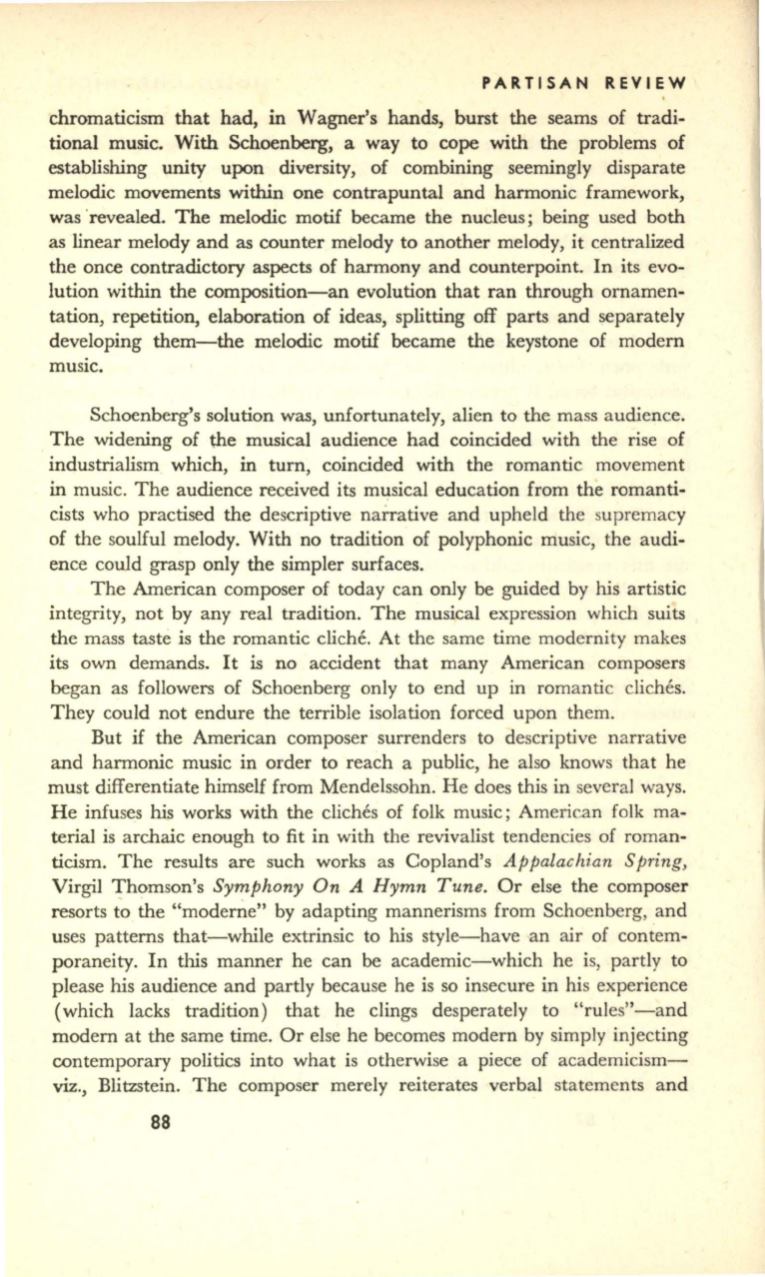
PARTISAN REVIEW
chromaticism that had,
in
Wagner's hands, burst the seams of tradi–
tional music. With Schoenberg, a way to cope with the problems of
establishing unity upon diversity, of combining seemingly disparate
melodic movements within one contrapuntal and harmonic framework,
was 'revealed. The melodic motif became the nucleus; being used both
as linear melody and as counter melody to another melody, it centralized
the once contradictory aspects of harmony and counterpoint. In its evo–
lution within the composition-an evolution that ran through ornamen–
tation, repetition, elaboration of ideas, splitting off parts and separately
developing them-the melodic motif became the keystone of modern
music.
Schoenberg's solution was, unfortunately, alien to the mass audience.
The widening of the musical audience had coincided with the rise of
industrialism which, in turn, coincided with the romantic movement
in
music. The audience received its musical education from the romanti–
cists who practised the descriptive narrative and upheld the supremacy
of the soulful melody. With no tradition of polyphonic music, the audi–
ence could grasp only the simpler surfaces.
The American composer of today can only be guided by his artistic
integrity, not by any real tradition. The musical expression which suits
the mass taste is the romantic cliche. At the same time modernity makes
its own demands. It
is
no accident that many American composers
began as followers of Schoenberg only to end up in romantic cliches.
They could not endure the terrible isolation forced upon them.
But if the American composer surrenders to descriptive narrative
and harmonic music in order to reach a public, he also knows that he
must differentiate himself from Mendelssohn. He does this in several ways.
He infuses his works with the cliches of folk music; American folk ma–
terial is archaic enough to fit in with the revivalist tendencies of roman–
ticism. The results are such works as Copland's
Appalachian Spring,
Virgil Thomson's
Symphony On A Hymn Tune.
Or else the composer
resorts to the "moderne" by adapting mannerisms from Schoenberg, and
uses patterns that-while extrinsic to his style-have an air of contem–
poraneity. In this manner he can
be
academic-which he is, partly to
please his audience and partly because he is so insecure in his experience
(which lacks tradition) that he clings desperately to "rules"-and
modern at the same time. Or else he becomes modern by simply injecting
contemporary politics into what is otherwise a piece of academicism–
viz., Blitzstein. The composer merely reiterates verbal statements and
88


